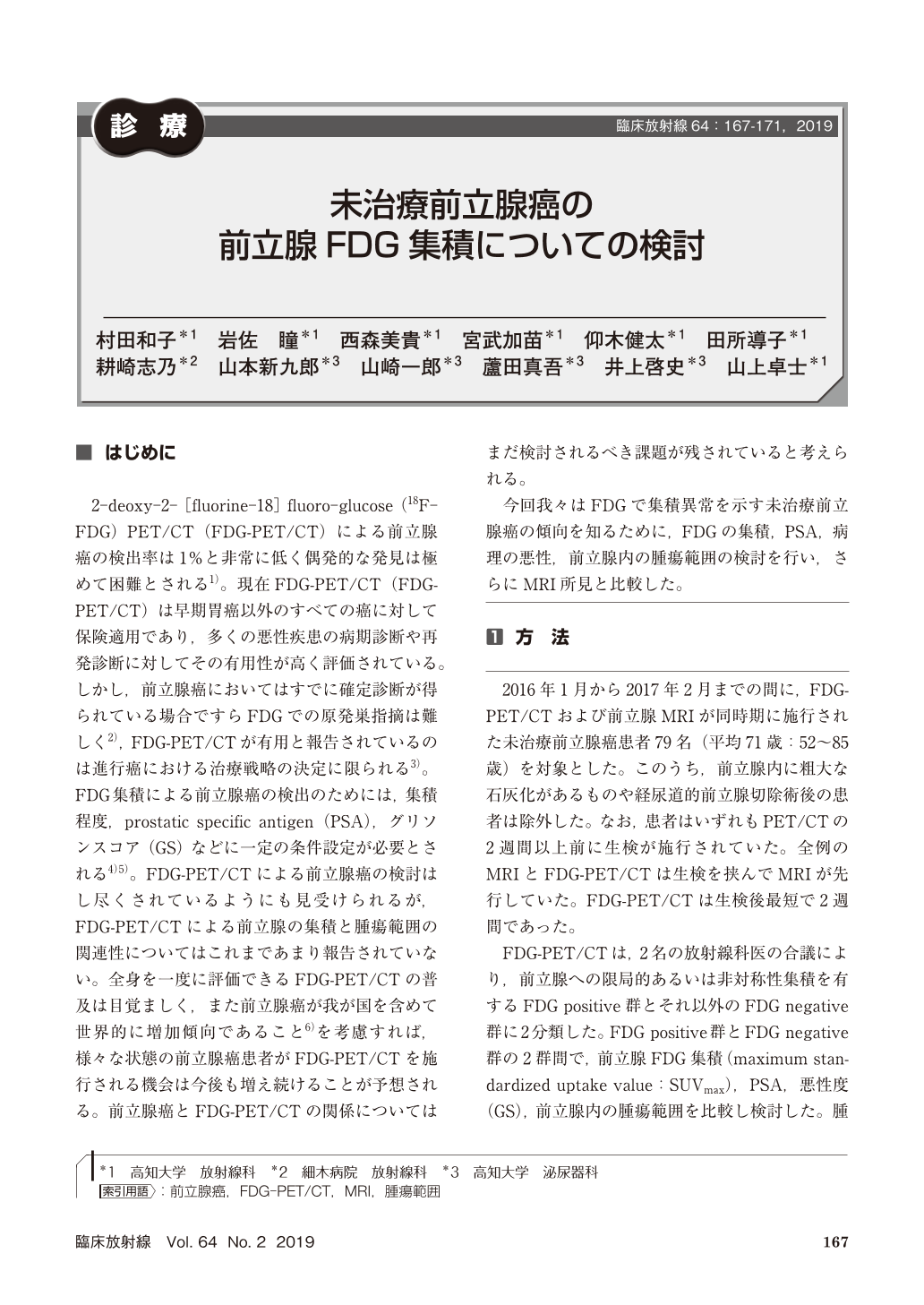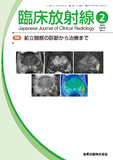Japanese
English
- 有料閲覧
- Abstract 文献概要
- 1ページ目 Look Inside
- 参考文献 Reference
2-deoxy-2-[fluorine-18]fluoro-glucose(18F-FDG)PET/CT(FDG-PET/CT)による前立腺癌の検出率は1%と非常に低く偶発的な発見は極めて困難とされる1)。現在FDG-PET/CT(FDG-PET/CT)は早期胃癌以外のすべての癌に対して保険適用であり,多くの悪性疾患の病期診断や再発診断に対してその有用性が高く評価されている。しかし,前立腺癌においてはすでに確定診断が得られている場合ですらFDGでの原発巣指摘は難しく2),FDG-PET/CTが有用と報告されているのは進行癌における治療戦略の決定に限られる3)。FDG集積による前立腺癌の検出のためには,集積程度,prostatic specific antigen(PSA),グリソンスコア(GS)などに一定の条件設定が必要とされる4)5)。FDG-PET/CTによる前立腺癌の検討はし尽くされているようにも見受けられるが,FDG-PET/CTによる前立腺の集積と腫瘍範囲の関連性についてはこれまであまり報告されていない。全身を一度に評価できるFDG-PET/CTの普及は目覚ましく,また前立腺癌が我が国を含めて世界的に増加傾向であること6)を考慮すれば,様々な状態の前立腺癌患者がFDG-PET/CTを施行される機会は今後も増え続けることが予想される。前立腺癌とFDG-PET/CTの関係についてはまだ検討されるべき課題が残されていると考えられる。
FDG-PET/CT in seventy-two patients with untreated prostatic were retrospectively analyzed. Patients were divided into 2 groups(FDG positive:focal or asymmetric FDG uptake in prostate, FDG negative:others). Of 72, FDG positive included 39, and FDG negative included 33.
Focal or asymmetric FDG uptake within prostate could be much more correlated with the tumor occupation ratio in the prostate than PSA or Gleason Score. Tumor occupation ratio in the prostate could be the important factor of FDG uptake in prostatic cancer.

Copyright © 2019, KANEHARA SHUPPAN Co.LTD. All rights reserved.


